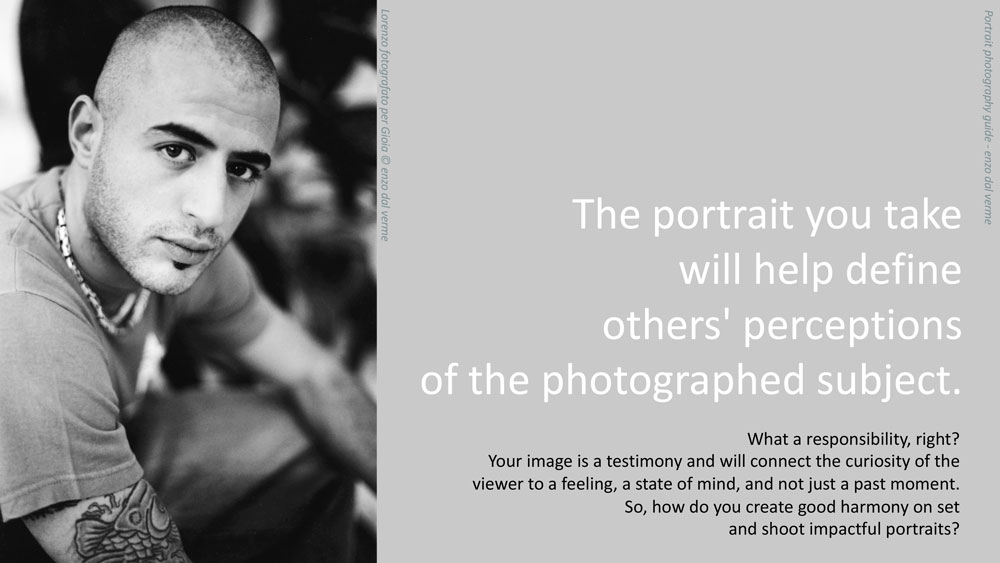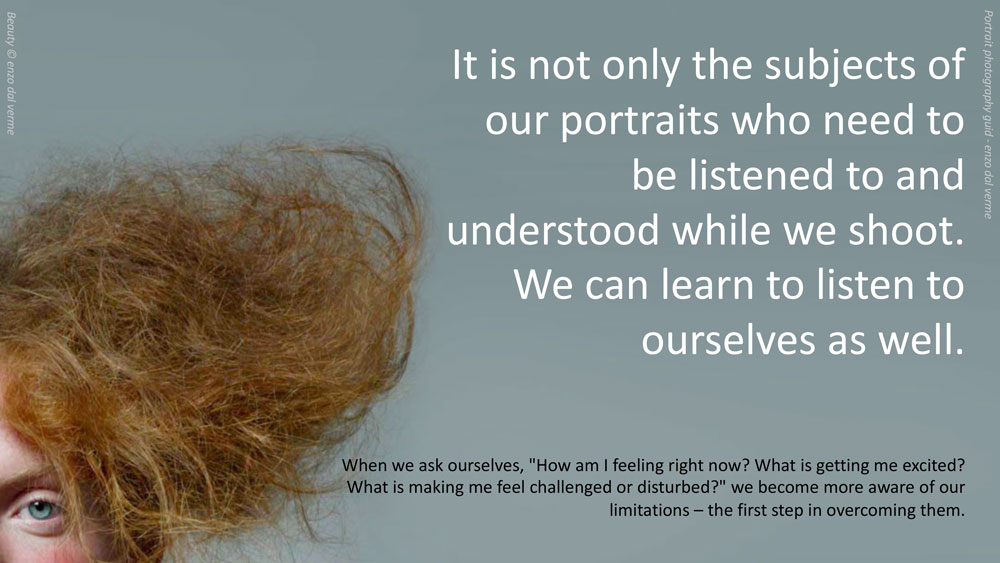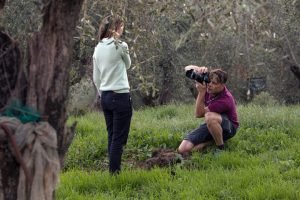The Portrait Photography Guide: Free Download
When it comes to portrait photography, how much time do you spend on your technical preparation and how much on developing your ability to interact with your subjects?
Now there is a guide that explores some of the less talked about topics around portrait photography.
Every photographer would love to have the ability to create good harmony on set and shoot impactful portraits, but—more often than not—they end up focusing primarily on the technical flawlessness and aesthetic balance of what they are photographing, leaving out or attaching little importance to the relational aspect.
Despite the use of technology becoming increasingly pervasive in our society, let’s not forget that landmark images have been created by a number of great photographers who were not as preoccupied with equipment as modern amateurs are.
Having a good camera is advantageous. But is that enough?
The photographer must choose what to frame and what not to, decide the moment of the shot and interact with the person being portrayed to capture a nuance of their mood or an aspect of their character. Having an image culture and authorial sensitivity goes beyond mere technique.
A camera is simply a tool that captures shapes, outlines, light and darkness… We must remember that the tool itself is not as crucial as the message it conveys. To put it another way, the photographer utilizes the camera to provide their own perspective and concentrate on what they observe in the subject.
That’s a great responsibility because they are somehow deciding how the subject will be seen by future generations. Whether the photo is printed in a magazine or kept as a family memento, it will still be kept forever. It is then up to the photographer to capture more than just the physical features of the subject. This depends largely on their ability to comprehend and empathize with the person they are photographing.

3 More than one’s merrier.
The relationship aspect of a portrait session can be complex because it brings into play our sensitivity, our ability to feel empathy. These are things you can’t adjust, like ISO or aperture! We need to venture into territory where we are often less prepared.
To determine the most appropriate behavior to adopt with a subject, we must rely on what is not logical, that is, our sensitivity and intuition. But where is the instruction booklet?
Well, it’s not really an instruction booklet, but the Portrait Photography Guide explores some of the least discussed topics concerning portrait photography. Its pages are meant to help you study photography and delve into aspects that are almost never covered in photography courses and classes.

Download portrait photography guide for free
You can download it for free by clicking here. It’s a pretty big guide:
• 55 pages of practical advice
• 9 interviews
• 19 key aspects to check
• 40 portraits




